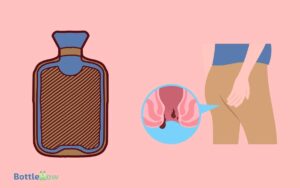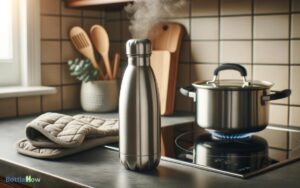Water Bottle Is How Many Ounces
Typically, water bottles range between 8 and 32 fluid ounces, or approximately 237 to 946 milliliters. The 8-ounce bottles are great for short outings or kids, while 16-ounce bottles suit moderate activities.
For extended workouts, 24-ounce bottles are practical, while 32-ounce bottles are ideal for all-day hydration. Understanding these size variations guarantees you meet your hydration needs efficiently and track your daily intake accurately.
Accurate measurement of fluid volume is essential for planning, especially in travel and storage contexts. To get a more detailed perspective on how different bottle sizes can impact your hydration strategy, continue exploring.
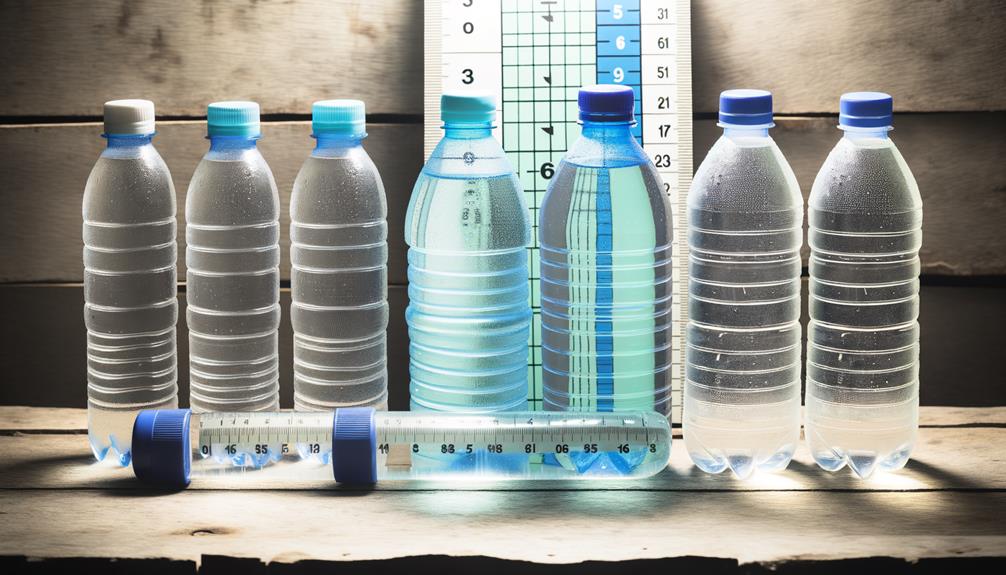
Key Takeaways
- Water bottles commonly come in sizes like 8, 16, 24, and 32 ounces.
- Knowing bottle volume helps track daily hydration effectively.
- 1 fluid ounce is approximately 29.5735 milliliters.
- Bottle size impacts portability and convenience for different activities.
Understanding Ounces
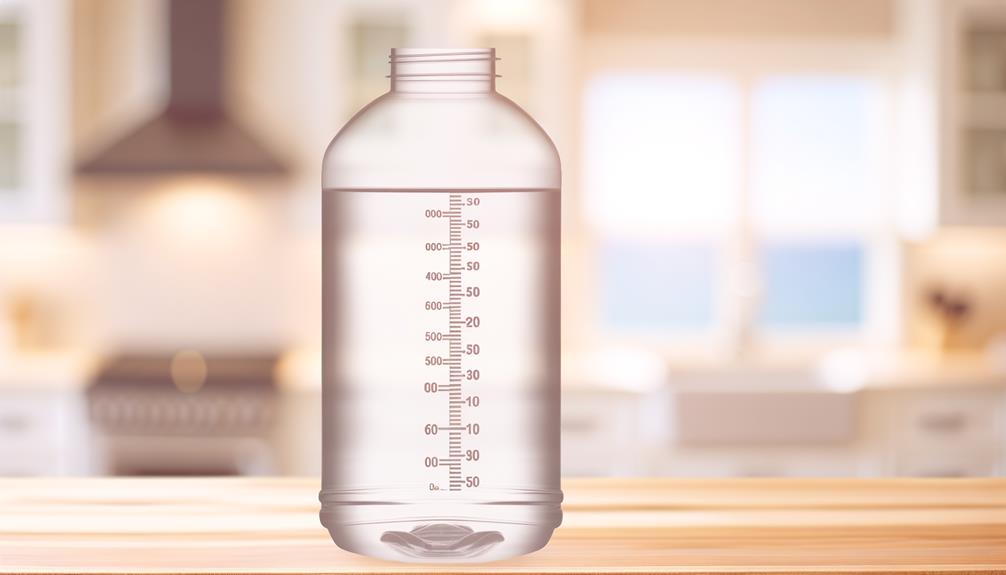
Ounces, a unit of weight in the imperial system, are commonly used in the United States to measure both liquid and dry ingredients.
When you measure liquid substances, you refer to fluid ounces (fl oz), whereas dry ingredients use ounces (oz) by weight. One fluid ounce equals approximately 29.5735 milliliters, and one ounce by weight is about 28.3495 grams.
For precision, it's important to differentiate between these two types because they serve distinct purposes. Fluid ounces quantify volume, often used for beverages and liquids, while ounces measure mass, crucial for dry goods.
Understanding these distinctions guarantees accurate measurements, which are significant for recipes, scientific experiments, and industry standards.
Mastering these concepts enhances your comprehension and application in various fields.
Common Water Bottle Sizes
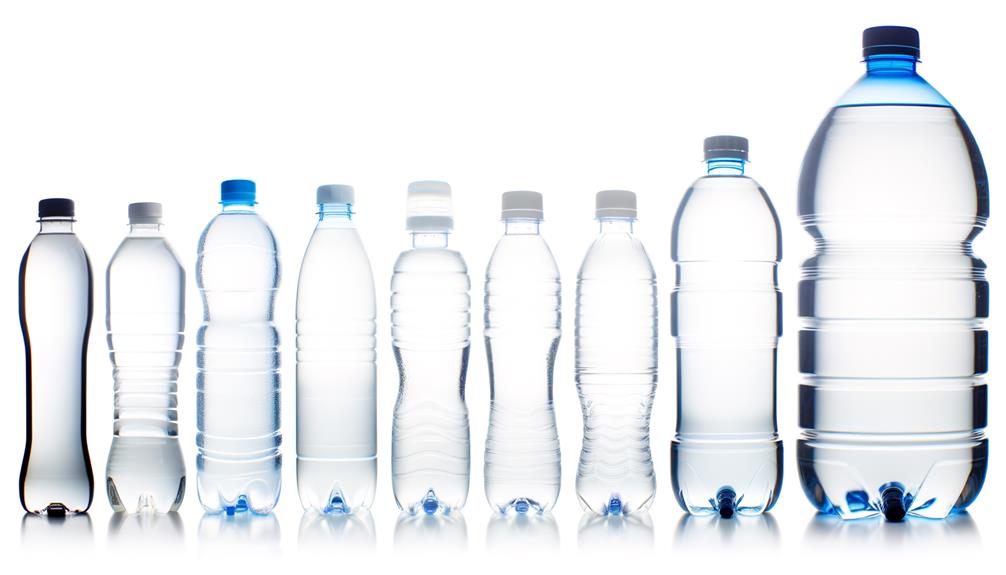
When choosing a water bottle, you'll find common sizes typically range from 8 ounces to 32 ounces, each catering to different hydration needs and preferences. Understanding these sizes helps you select the best bottle for your activities.
Consider the following:
- 8-ounce bottles: Ideal for short outings or for children.
- 16-ounce bottles: Suitable for moderate activities, providing a portable yet sufficient hydration option.
- 24-ounce bottles: Great for longer workouts, ensuring you stay hydrated without frequent refills.
- 32-ounce bottles: Perfect for all-day use or intensive exercise, offering maximum hydration capacity.
Each size serves a distinct purpose, allowing you to tailor your hydration strategy effectively.
Selecting the right size enhances your hydration and convenience, improving your overall experience.
Importance of Knowing Bottle Volume
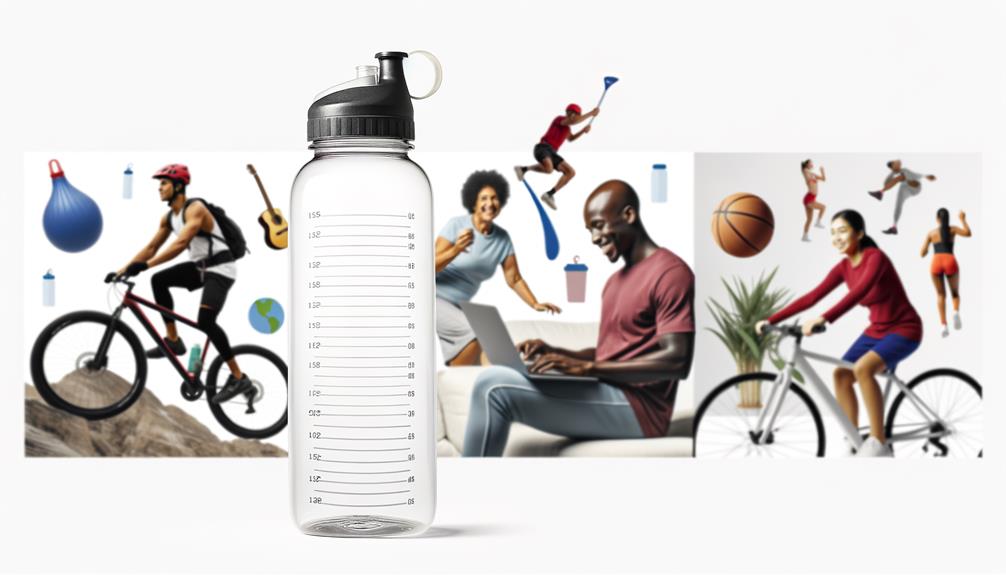
Understanding the volume of your water bottle is essential for accurate hydration tracking, ensuring you meet your daily intake goals.
It also facilitates efficient space planning, particularly in situations like packing for travel or organizing storage.
Knowing the exact ounces helps you manage both your health metrics and logistical needs with precision.
Accurate Hydration Tracking
Knowing the exact volume of your water bottle is vital for precise hydration tracking, guaranteeing you meet your daily fluid intake goals efficiently.
Accurately monitoring your water intake helps enhance bodily functions and maintain peak health. Here's why knowing your bottle's capacity is essential:
- Daily Intake Calculation: Determine exactly how many bottles you need to drink to reach your daily target, whether it's 64 ounces or any other specific goal.
- Consistent Hydration: Avoid guesswork and make sure you're consistently consuming the right amount of water throughout the day.
- Activity-Specific Needs: Adapt your intake based on physical activity, temperature, and individual health requirements.
- Health Metrics: Accurate tracking helps you analyze hydration trends and make data-driven adjustments to your routine.
Understanding your bottle's volume is key to effective hydration management.
Efficient Space Planning
Accurately knowing your water bottle's volume not only aids in hydration tracking but also plays a significant role in efficient space planning, optimizing storage and portability for your daily activities.
When you understand the exact size—be it 12, 24, or 32 ounces—you can better allocate space in your backpack or gym bag. This knowledge aids in balancing your load and guarantees you're not overpacking.
Additionally, knowing your bottle's dimensions can streamline storage in compact spaces, like a car cup holder or a refrigerator shelf. Proper space management minimizes clutter and maximizes utility.
Accurately fitting your water bottle in designated spaces enhances mobility and guarantees you always have your hydration needs met without unnecessary bulk.
Measuring Your Water Bottle
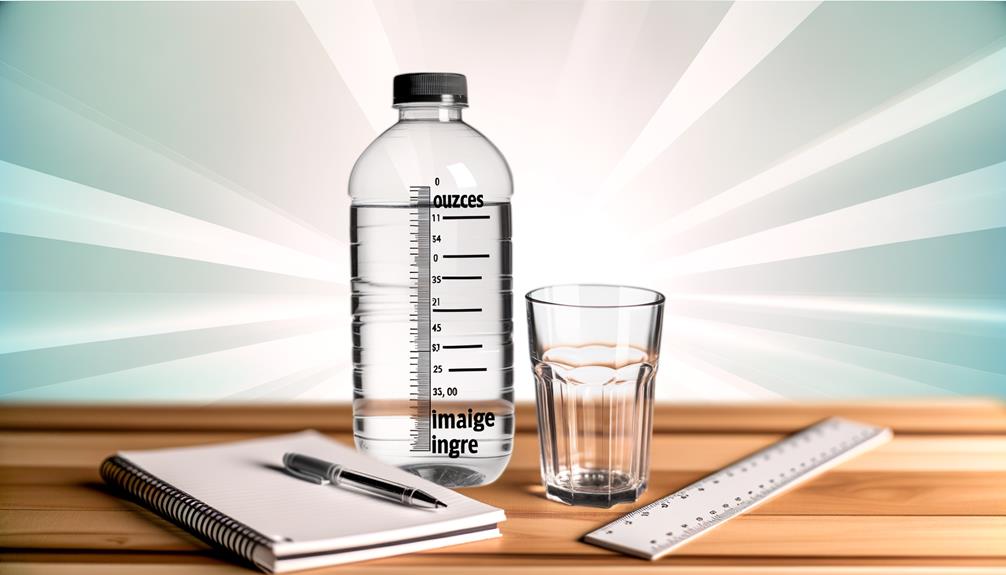
To measure your water bottle's capacity, use a calibrated measuring cup to fill it with water and note the volume in ounces. This method guarantees accurate data collection.
Follow these steps:
- Select a calibrated measuring cup: Choose one with clear ounce markings to guarantee precision.
- Fill the measuring cup with water: Start with a specific volume, such as 8 ounces, to simplify the process.
- Pour water into the bottle: Gradually add the measured water to your bottle, noting the total ounces.
- Record the total volume: Sum all increments to determine your bottle's full capacity.
Accurate measurement is essential for hydration tracking, dietary planning, and efficient use of your water bottle. This straightforward process guarantees you have precise capacity data.
Converting Between Units
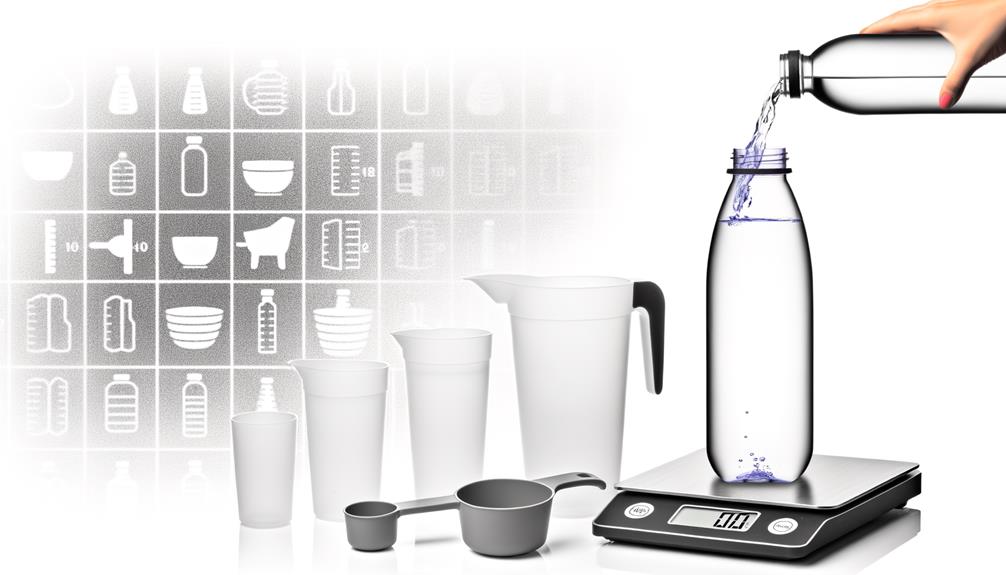
When converting between units, understanding the relationship between ounces and other common measurements like milliliters or liters is vital. One ounce is approximately 29.5735 milliliters, and one liter is 33.814 ounces. Knowing these conversions allows accurate calculations for various liquid measurements. Here's a quick reference table:
| Measurement | Ounces | Milliliters/Liters |
|---|---|---|
| 1 ounce | 1 | 29.5735 milliliters |
| 1 liter | 33.814 | 1,000 milliliters |
| 500 milliliters | 16.907 | 0.5 liters |
Use this table as a guide when measuring water bottle capacities. Accurate conversions guarantee you know exactly how much liquid you're dealing with, whether you're hydrating during a workout or tracking daily water intake.
Choosing the Right Bottle
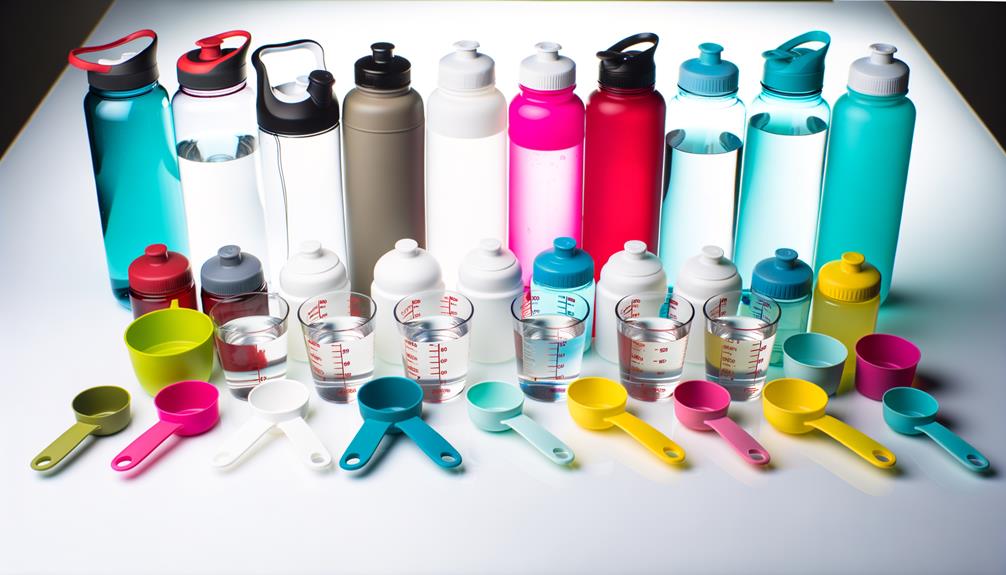
Selecting the right water bottle involves more than just understanding capacity conversions; you must consider material, insulation, and portability to match your specific hydration needs. Here are key factors to assess:
- Material: Options include stainless steel for durability, BPA-free plastic for lightweight convenience, and glass for purity and taste.
- Insulation: Double-wall vacuum insulation guarantees temperature retention, keeping liquids cold for up to 24 hours or hot for up to 12 hours.
- Portability: Evaluate the bottle's weight and design. Compact, collapsible bottles are excellent for travel, while ergonomic designs offer better grip.
- Capacity: Standard sizes range from 12 to 32 ounces. Choose based on your daily hydration requirements and planned activities.
Selecting wisely guarantees superior hydration and convenience.
Conclusion
By now, you’re practically a hydration expert. You know that a standard water bottle typically holds around 16. 9 ounces, while others can skyrocket to a whopping 64 ounces. With so many options available, choosing the right size depends on your daily hydration needs and lifestyle. Tracking your water bottle ounces can help ensure you’re drinking enough throughout the day. Whether you prefer a compact bottle for convenience or a larger one to minimize refills, staying hydrated has never been easier.
Accurate volume knowledge guarantees you're not lugging around a mini ocean or sipping from a thimble. Remember, converting units is as easy as multiplying by 29.5735 for milliliters.
Choose your bottle like a connoisseur—balanced perfectly for your hydration needs, whether it's a marathon or a casual stroll.

